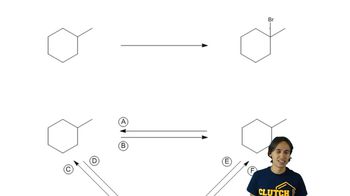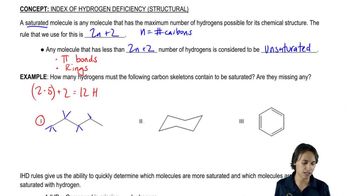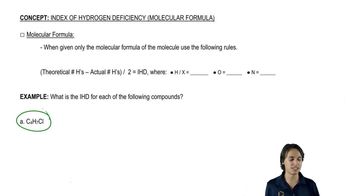Convert the following hybrid structural formulas into the line-angle drawings.
(b)
 Verified step by step guidance
Verified step by step guidance Verified video answer for a similar problem:
Verified video answer for a similar problem:



 4:03m
4:03mMaster How bondline is different from Lewis Structures. with a bite sized video explanation from Johnny
Start learning